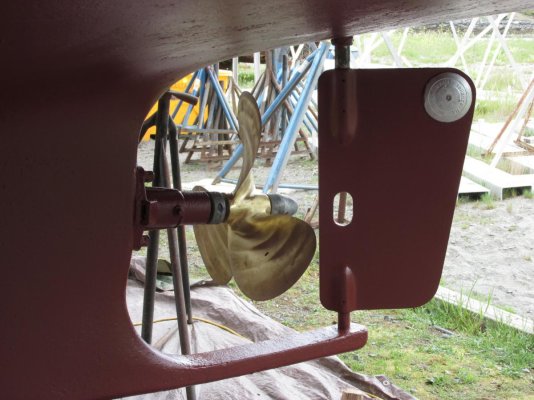On powerboat rudders you're not really considering them as a lifting foil, heck most of them are flat plates, so they'd likely stall at even small angles. A powerboat rudder is simply deflecting the prop wash to vector the thrust.
On hydraulic steering the concern with increasing the rudder angle is that you are losing the mechanical advantage the more you turn. When your rudder is centered the cylinder shaft is roughly 90 degrees to the tiller arm so the max mechanical advantage. As you turn the rudder this angle is decreasing so the mechanical advantage is decreasing. If you turn the rudder far enough the tiller arm would end up in line with the cylinder shaft, so no mechanical advantage.
Can you design a system to go more than 35 degrees each way, sure, but, probably not more than 45 degrees.
You aren't likely to be turning your rudder to large angles while at speed when the load is the highest. The advantage of large angles is when no or low speed maneuvering where the rudder loads are low.

